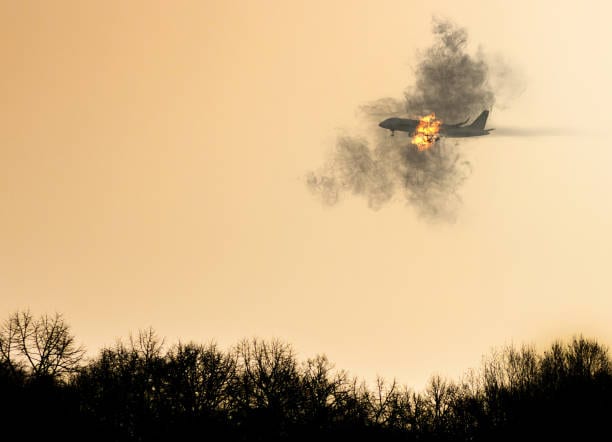Shockingly, the current in-flight fire safety solution is simply to “land as soon as possible”. And while there are active fire fighting systems on board in the event a fire breaks out such as automatic fire suppression systems and fire extinguishers, there is very little in the way of passive fire protection (to prevent the fire from spreading).
And of the 3 types of fires, engine fires, cabin fires, and hidden fires, hidden fires are by far the most dangerous as active fire suppression systems cannot reach these areas and these fires are able to spread unchallenged.
A comprehensive and eye-opening report clearly explains the fire risks aboard aircraft, from faulty wiring in older planes to toxic smoke from composite materials and various fuel sources.
According to the Royal Aeronautical Society and their report SMOKE, FIRE AND FUMES IN TRANSPORT AIRCRAFT PAST HISTORY, CURRENT RISK AND RECOMMENDED MITIGATIONS, “smoke and fire in transport aeroplanes continues to pose a risk in aviation.”
Due to the proliferation of lithium batteries and other risks, “the risk of future fire related incidents or accidents has increased. The importance of continued research, improved regulation, improved manufacturing standards, adoption of technology to mitigate inflight smoke and fire and oversight by safety professionals is proven in this document.”
“The threat profile of in-flight smoke and fire is also changing due to the expansion of composite materials used in aeroplanes. Composite materials burn differently, disperse heat differently and produce different toxic substances post ignition. The aviation industry and regulators acknowledge that there will be ignition sources and fuel sources for fires within aeroplanes. Only through multiple layers of mitigation can the risk be kept to an acceptable level. To be effective these multiple layers will need to be re-evaluated regularly and to utilise available technology wisely. The recommendations provide clear directions not only to maintain today’s level of safety but also to improve it.”
When a fire ignites it can easily spread and affect multiple systems. This spread has a cascading effect as more fuel becomes available to the fire from various sources. Compartmentalization of any fire in an aircraft should be a primary prevention method, and Zenova FP can effectively slow, and oftentimes completely stop, the spread of fire.


